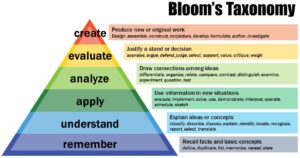Skip to content
Course Objective: Programming in Data Structures
- Understanding Data Structures: Introduce fundamental data structures such as arrays, linked lists, stacks, queues, trees, and graphs, and their applications in problem-solving.
- Algorithm Analysis: Teach students to analyze algorithm efficiency using Big O notation, focusing on time and space complexity.
- Implementation Skills: Gain hands-on experience implementing data structures in a programming language, enhancing coding proficiency and understanding of how data structures work under the hood.
- Data Manipulation: Develop skills for manipulating data within various data structures, including insertion, deletion, traversal, and searching algorithms.
- Advanced Structures: Explore more advanced data structures like hash tables, heaps, and balanced trees, and understand their use cases.
- Design and Optimization: Learn to design efficient algorithms for specific problems, focusing on optimization techniques and best practices in data structure usage.
- Problem-Solving: Strengthen problem-solving skills through practical exercises, case studies, and coding challenges that require the application of data structures.
- Real-World Applications: Examine real-world applications of data structures in software development, including databases, networking, and system design.
- Collaboration and Communication: Promote teamwork and communication skills through group projects, code reviews, and presentations on data structure concepts and implementations.
Course Objective: Programming in C
- Fundamental Concepts: Understand the basics of programming, including data types, control structures, functions, and arrays.
- C Language Syntax: Gain proficiency in C syntax and semantics, enabling students to write clear and efficient code.
- Problem-Solving Skills: Develop analytical and critical thinking skills to approach and solve programming problems effectively.
- Memory Management: Learn about pointers, dynamic memory allocation, and memory management techniques to optimize program performance.
- File I/O: Understand how to read from and write to files, enabling the creation of applications that handle data persistently.
- Modular Programming: Implement and utilize functions and libraries to create modular, maintainable code.
- Debugging and Testing: Acquire skills in debugging techniques and testing methodologies to ensure code reliability and correctness.
- Project Development: Work on a capstone project that synthesizes all learned concepts, emphasizing design, implementation, and documentation.
- Best Practices: Familiarize with industry best practices, including code documentation, version control, and code reviews.

